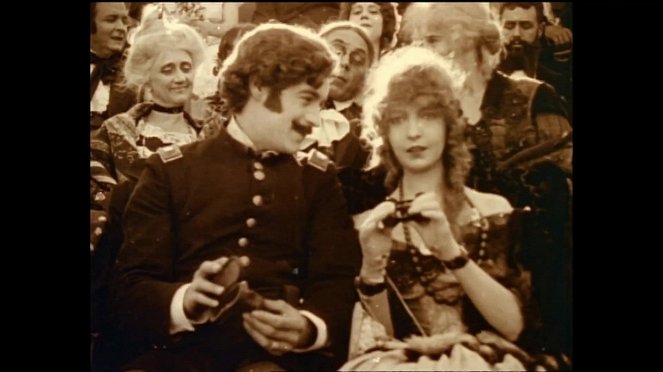Directed by:
D.W. GriffithScreenplay:
D.W. GriffithCinematography:
G.W. BitzerCast:
Lillian Gish, Mae Marsh, Henry B. Walthall, Miriam Cooper, Mary Alden, Ralph Lewis, George Siegmann, Walter Long, Robert Harron, Wallace Reid, Joseph Henabery (more)Plots(1)
The Birth of a Nation begins depicting the amiable relationship between two families, Northern and Southern, and the way in which the impending Civil War intensifies the conflict of their worldviews. Following the end of the war and the assassination of President Lincoln, a lawless chaos courses throughout the Reconstruction South, and the Ku Klux Klan is formed to take on a rising black militia and impose a vengeful vigilante justice across their land and "birthright". It's a film that's deeply divisive even to the senses of a single viewer: images of painterly beauty in composition and tonal quality often exhibit a contemptuous, inflammatory coarseness with regard to subject matter; just as frequently, long tracts evince an innocent, terrifically lyrical grandeur. (Eureka Entertainment)
(more)Reviews (2)
The rightful king and forerunner of all narrative Hollywood tentpoles (never mind Gone with the Wind or Ben Hur), which in the span of 190 minutes both engagingly and unhesitatingly demonstrates and anticipates how classical narratives should and will guide and constantly hold the viewer's attention. In particular, the work with mise-en-scène and the cross-editing are perfect, and the final hour, when the story evenly builds up on three interconnected fronts, is a pure example of the director's ageless genius. It is undoubtedly the greatest and most inspiring work of the first twenty years of cinema, and as such it simply deserves a full rating.
()
There has been quite a lot written about how controversial this film is. Yes, it is racist. What will you do about it today? Nothing. You don't have to promote it. However, I would still like to draw attention to its cinematic qualities. The way the battles are depicted, executed, and of course, filmed is absolutely incredible. The camera is not just static here, it moves, which is quite a novelty. But that's not all. For its time, it is incredibly epic and just a few years after Méliès, we see exteriors and beautifully wide shots, as well as excellent close-up shots. Sometimes part of the camera is shaded to better focus on the scene. The shots are often edited in a way that adds to their dynamism. Clearly, it is not a montage-style editing, but it is brilliant for its time. The way the assassination of President Lincoln is captured is absolutely breathtaking, it will leave you breathless in the film's events. Griffith and his cameraman chose great camera angles that enhance the atmosphere even more. Moreover, those dynamic scenes with the camera on a carriage are truly impressive for its time. It may be racist, but it's still a cinematic gem.
()

